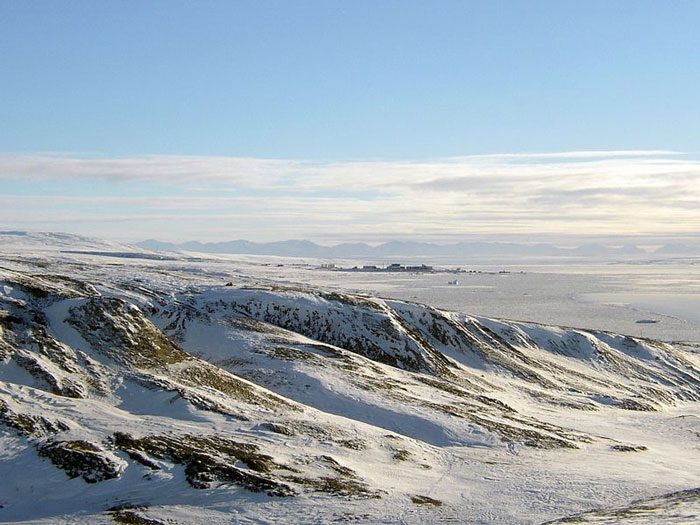Vostok Station, Ellesmere Island, Oymyakon Village, Bangkok City, Death Valley… are some of the most famous locations known for their record low and high temperatures. Join us as we explore the hottest and coldest places on Earth in the article below.
The Coldest Places on Earth
Vostok Station, Russia
Vostok Station, currently used by Russian, French, and American experts, is located 1,253 km from the South Pole and 1,260 km from the nearest coastline. It sits at an elevation of 3,500 meters above sea level and is situated on a thick ice sheet measuring 3,700 meters deep.
In 1983, a record low temperature of -89.2 degrees Celsius was recorded here, the lowest temperature ever measured on the planet since the station’s establishment.
While winters here are unforgiving, summers see temperatures not exceeding -21 degrees Celsius. The weather conditions throughout the year are severe, yet there are always people working at Vostok: 13 in the winter and 25 in the summer.
Ellesmere Island, Canada
Ellesmere is a vast island, the 10th largest in the world, but it is not a tropical paradise; rather, it is marked by sprawling ice deserts.
The average temperature here is -20 degrees Celsius, dropping to around -40 degrees Celsius in winter. Despite its large area, according to 2005 statistics, the island has only 170 permanent residents.
There are three settlements on Ellesmere Island: Alert (the northernmost point on Earth), Eureka, and Grise Fiord. However, no tourists are eager to visit this remote location, especially considering that a flight here costs about $20,000.
Oymyakon, Russia
Oymyakon is a village located in Yakutia, 350 km south of the Arctic Circle. In 1926, the lowest recorded temperature here was -71.2 degrees Celsius. The average temperature in Oymyakon and some other areas in Yakutia during January is -47 degrees Celsius, occasionally dropping to -50 degrees Celsius in winter. This place is considered one of the coldest locations in the Northern Hemisphere, alongside Greenland.
Verkhoyansk, Siberia
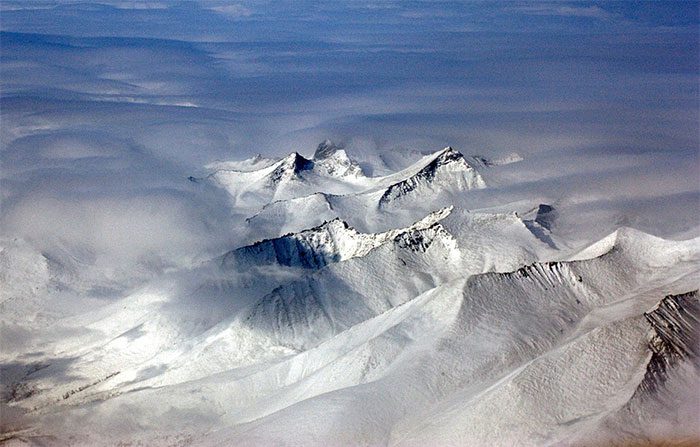
Verkhoyansk is an area in Siberia, originally a center for fur trading and reindeer herding. Established in 1638, it became a place of exile for political prisoners until 1971. Interestingly, in addition to being the third coldest area in the world, Verkhoyansk is also the third smallest city in Russia.
Snag, Yukon Territory, Canada

Snag is the coldest recorded area in North America, with temperature records dating back to the early 20th century. This small village is located in a bowl-shaped valley near the White River. The name Snag has been used since 1898.
The record low temperature here was recorded in 1947. The residents are primarily Indigenous peoples, fur traders, or meteorological experts.
Prospect Creek, Alaska, USA
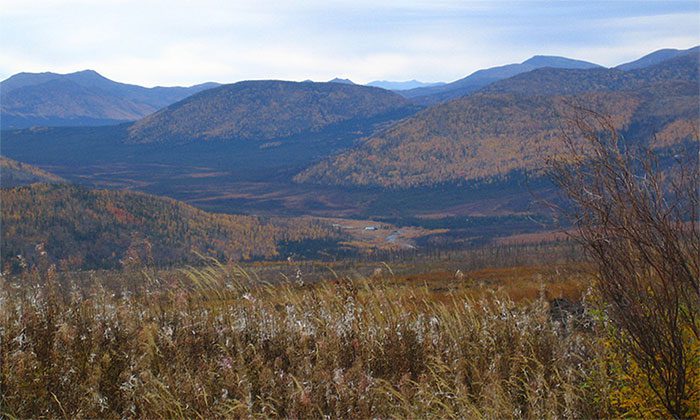
Prospect Creek is located about 290 km north of Fairbanks and approximately 40 km southeast of the present-day Bettles, marking the coldest area in the United States. In January 1971, temperatures at Prospect Creek dropped to an unprecedented low of -62 degrees Celsius. Today, the weather in this region is even more extreme, with the coldest period occurring in February.
Prospect Creek has a subarctic climate. Despite the extremely low temperatures, the local flora and fauna remain relatively diverse, including black bears, brown bears, and bald eagles. Prospect Creek has been expanded several times, but due to harsh conditions, it has significantly shrunk compared to its previous size.
Barrow, Alaska
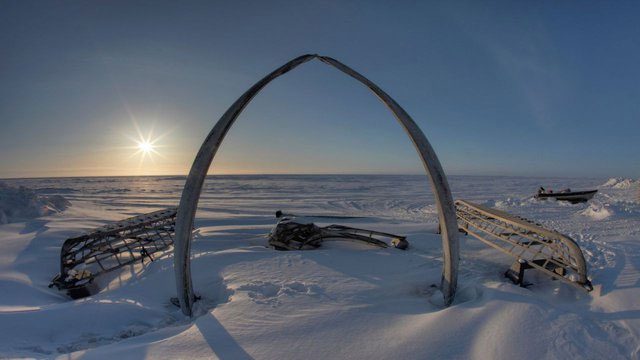
Barrow is so cold that the sun sets in late November and does not reappear until the end of January. (Photo: Pixabay).
Barrow, located in the state of Alaska, is at the northernmost point of the United States, over 500 km north of the Arctic Circle and 2,000 km south of the North Pole. The lowest temperature in this area is around -62 degrees Celsius. It is so cold here that the sun sets in late November and reappears only by the end of January. Even in summer, the air remains chilly, with temperatures only beginning to rise above freezing in June, averaging around 3 degrees Celsius during this period.
Due to the extremely low temperatures, Barrow has a very small population, primarily focused on ice tourism. Despite its vast area, according to 2005 statistics, there are only 170 permanent residents.
Amundsen-Scott Station in Antarctica (-82.8°C)
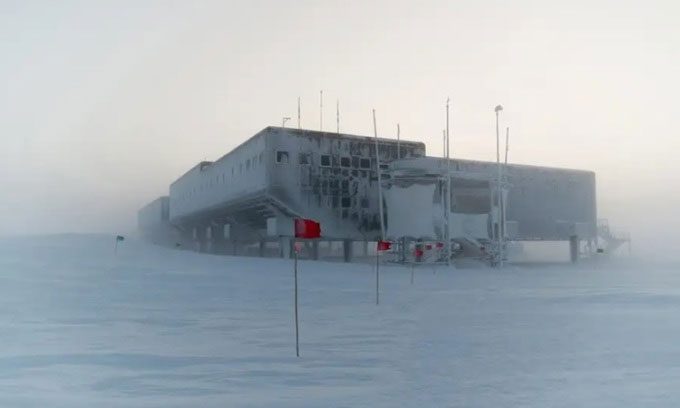
Amundsen-Scott Station. (Photo: Jens Dreyer).
Located in Antarctica, Amundsen-Scott Station was built in 1956, experiencing six months of continuous sunlight in summer and six months of total darkness in winter. The highest temperature recorded here was on Christmas Day in 2011 when the thermometer read -12.3°C. The coldest temperature recorded at this location was -82.8°C in June 1982.
East Antarctic Plateau (-94°C)
The East Antarctic Plateau is the coldest place on Earth. Satellite data collected from 2004 to 2016 in the Argus Ice Dome and Fuji Ice Dome, a region the size of Australia, indicate that air temperatures can plummet to around -94°C. If these measurements are accurate, this represents the coldest air temperature on the planet. Researchers believe that ground temperatures could drop as low as -98°C.
Denali, Alaska, USA (-73°C)
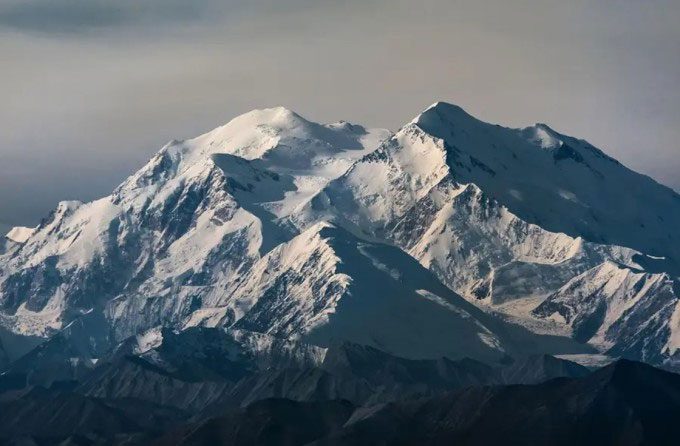
Denali, the highest peak in North America. (Photo: John Levandoski).
Denali, formerly known as Mount McKinley, is the highest peak in North America (over 6,000 m above sea level). With an average temperature around -10°C, only half of those who attempt to climb the mountain reach the summit. From 1950 to 1969, a weather station recorded temperatures around -73°C, but wind chill can make it feel as cold as -83.4°C.
Klinck Station, Greenland (-69.6°C)
Klinck Weather Station holds the record as the coldest place in the Arctic Circle. Located in central Greenland, Klinck surpassed the previous record held by Oymyakon by about 2 degrees Celsius in December 1991, reaching -69.6°C. Despite such frigid temperatures, much of Greenland’s ice is melting rapidly.
North Ice Station, Greenland (-66.1°C)
The research station established by the British North Greenland Expedition in the 1950s recorded a temperature of -66.1°C in 1954.
The Hottest Places on Earth
El Azizia, Libya
El Azizia is considered the hottest place on the planet. On September 13, 1922, a local weather station recorded a temperature of 57.8 degrees Celsius. Even when measured in the shade at a height of 5 meters above the ground, the actual temperature recorded that day was 66 degrees Celsius.
Dallol, Ethiopia
Dallol is a settlement in northern Ethiopia situated 50 meters above sea level. Currently, Dallol holds the record for the highest average temperature in the world. Between 1960 and 1966, the average temperature here was recorded at 34 degrees Celsius.
Death Valley, United States
Death Valley is located in California. In 1913, the highest temperature in the Western Hemisphere was recorded at 56.7 degrees Celsius. The average temperature in July here reaches 46 degrees during the day and drops to 31 degrees Celsius at night.
Bangkok, Thailand
The International Meteorological Organization has awarded Thailand’s capital the title of the hottest city in the world. The average annual temperature in this city is 28 degrees Celsius. The hottest period is from March to May, when temperatures can reach 34 degrees with humidity levels at 90%.
Lut Desert, Iran

Data from the United States Geological Survey’s Landsat infrared satellite has proven that the Lut Desert in Iran is the hottest place on Earth, with temperatures reaching up to 70.7 degrees Celsius (in 2005) – a shocking figure for the scientific community. Notably, in the years 2004, 2006, 2007, and 2009, such high temperatures were consistently recorded in this desert.
Iraq
Adjacent to Iran, Iraq also experiences a hot, dry climate with little rainfall in the summer. There are many consecutive days where temperatures soar above 50 degrees Celsius. Despite having a cold temperate winter, the average annual temperature in Iraq remains high, ranging from 20 to 30 degrees Celsius. Therefore, it is still considered one of the hottest countries in the world.
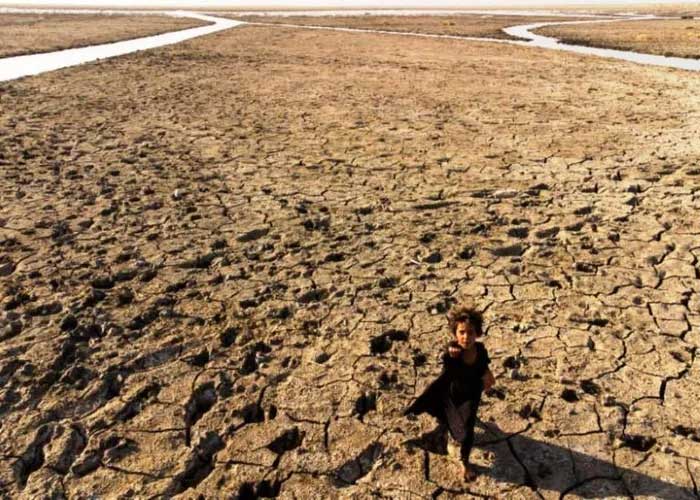
Heatwaves, droughts, and sandstorms have hit Iraq – one of the countries most threatened by climate change.
Algeria
Most of Algeria is covered by the Sahara – the largest desert in the world. According to the Vietnamese Ministry of Foreign Affairs portal, 87% of Algeria’s total area of nearly 2.4 million square kilometers is desert. According to World Atlas, this figure rises to over 90%.
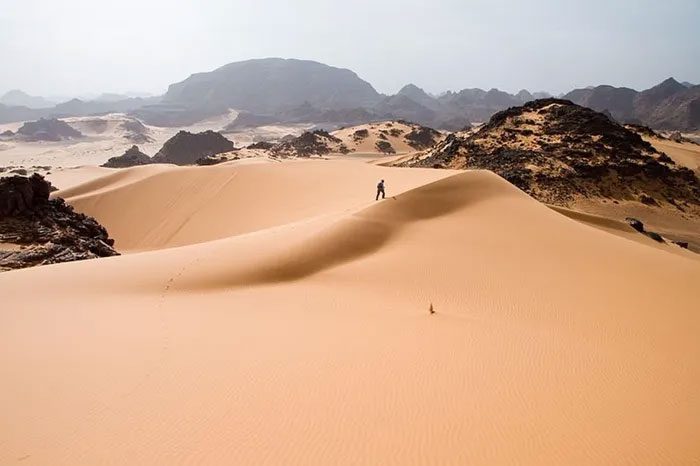
The Sahara Desert covers over 80% of Algeria’s territory. (Photo: Internet).
Saudi Arabia
Saudi Arabia is the largest country in the world without rivers. Up to 95% of Saudi Arabia’s territory is desert or arid land, with only 1.45% of its land area suitable for cultivation. This results in average summer temperatures soaring to 50 degrees. In some areas, temperatures can reach as high as 52 degrees, significantly affecting the lives and livelihoods of the people.
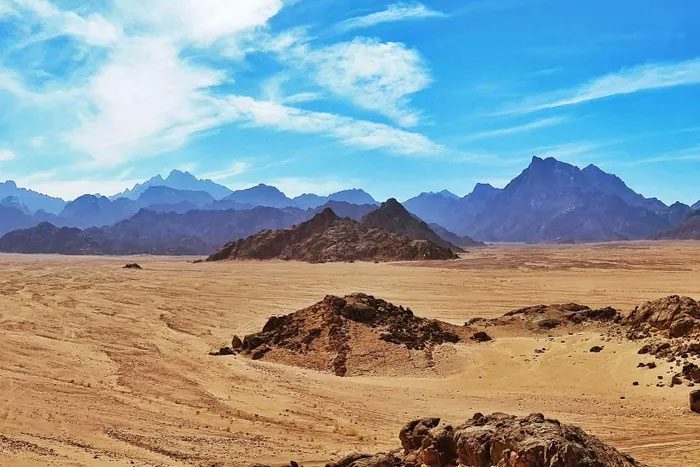
Arabian Desert. (Photo: Britannica).
Ghadames Oasis, Libya

This desert oasis is famous for being one of the hottest places in the world, with temperatures reaching up to 55 degrees Celsius. Ghadames has high temperatures year-round, with an average temperature of 41 degrees Celsius and a peak recorded temperature of 55 degrees Celsius. The hottest period in Ghadames is from May to September.
Kebili, Tunisia
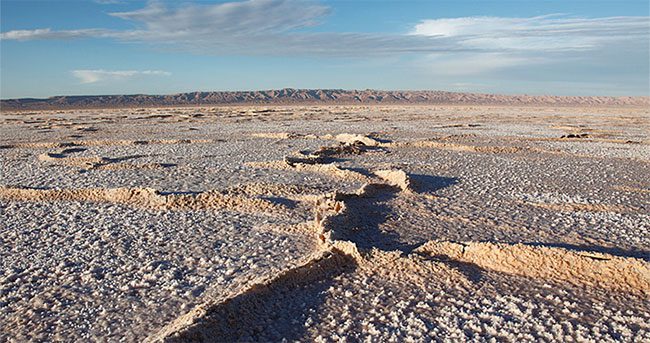
July is the hottest month in Kebili, with a record temperature of 55 degrees Celsius previously recorded. As of 2004, the population of Kebili was 18,693. Kebili is a major tourist destination in Tunisia, and its economy primarily relies on date palm production.









































